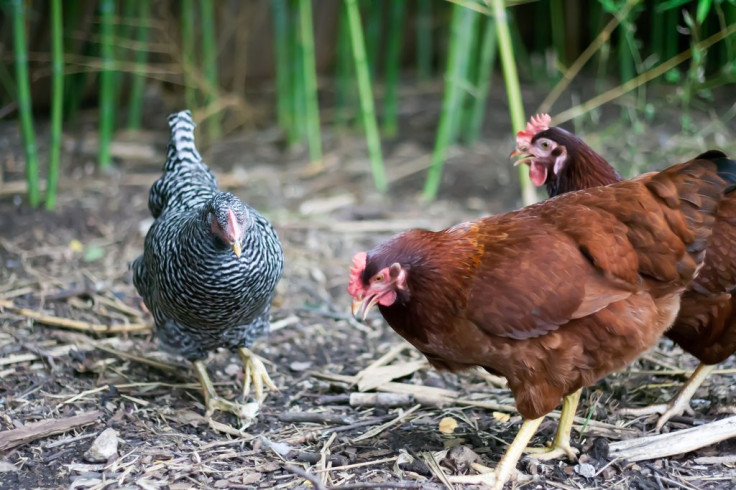Food Safety: Understanding The Behavior Of Chicken Flocks Could Prevent Food Poisonings

The Food and Drug Administration (FDA) estimates there are around 48 million cases of foodborne illnesses each year that lead to 128,000 hospitalizations and 3,00 deaths. A recent study conducted by researchers from the University of Oxford has developed a new technique that monitors the movement of chicken in a flock and could potentially be used to detect the most common bacterial source of food poisonings among humans in the United Kingdom and United States, Campylobacter.
“Humans consume nearly 60 billion chickens a year - more than any other animal. At the same time, there is a worldwide epidemic of human gastroenteric disease caused by Campylobacter. It is estimated that up to four-fifths of this disease originates from contaminated chicken meat,” said Dr. Frances Colles, lead author of the study from Oxford University's Department of Zoology, in a statement.
Colles and his colleagues collected data for 31 commercial broiler flocks to test their hypothesis that optical flow analysis can actually detect when chicken flocks become infected with Campylobacter. The research team also collected fecal samples from the flocks and tested them for Campylobacter at 21 days, 28 days, and 35 days using standard lab protocol. Analyzing the “optical flow” of chickens involved using a camera system that detects patterns that are formed by changes in brightness in moving images.
Chicken flocks that tested positive for Campylobacter had a lower average of optical flow and high kurtosis – uniform movement – compared to flocks that were not infected with the bacteria as of the first 10 days of life. The researchers also noted that their optical flow technique was much easier than conventional sampling methods used on the farm and did not require tagging or marking individual animals meaning farmers could monitor entire flocks as oppose to a few chickens.
“Despite intensive efforts to improve on-farm biosecurity practice over the past decade, more than 70% of EU broiler [meat] chicken flocks remained Campylobacter-positive at slaughter during 2008, and the incidence of human disease continues unabated,” Colles explained. “This suggests that environmental contamination of growing broilers may not be the only cause of high rates of Campylobacter infection in chickens and that key points for intervention - for example, in breeder flocks, hatcheries, or management in the first week of chick life - remain unrecognized.”
According to the Centers for Disease Control and Prevention, Campylobacter is one of the most common causes of diarrheal illness in the U.S. with most cases occurring as isolated, sporadic events as oppose to recognized outbreaks. Campylobacter tends to reach humans through raw or undercooked chicken and has been pretty difficult to eliminate from the food chain. Campylobacteriosis – the infectious disease caused by Campylobacter – results in diarrhea, cramping, abdominal pain, and fever within two to five days after exposure to the organism.
Source: Proceedings of the Royal Society B. 2016.
Published by Medicaldaily.com



























